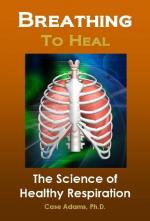|
This section contains 1,326 words (approx. 5 pages at 300 words per page) |

|
Organisms respire in order to obtain oxygen and get rid of carbon dioxide. Oxygen drives cellular metabolism, the process in which glucose from food is converted to usable energy resources in the form of adenosine triphosphate, (ATP). Carbon dioxide is a by-product of this reaction. Aquatic species obtain oxygen from water, while terrestrial species obtain it from air. These two media, water and air, are often associated with different respiratory strategies. This is partly because the amount of oxygen in air is far greater than that dissolved in water. In addition, air requires much less energy to pump than does water, which is considerably more dense.
Many organisms do not require special respiratory organs because they obtain an adequate supply of oxygen through diffusion across the body surface. This is known as cutaneous gas exchange. Cutaneous gas exchange is often employed by small animals, which have a high...
|
This section contains 1,326 words (approx. 5 pages at 300 words per page) |

|


